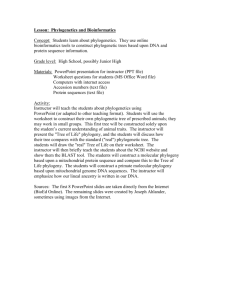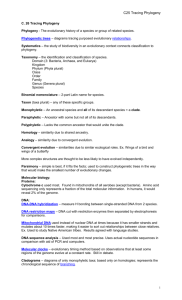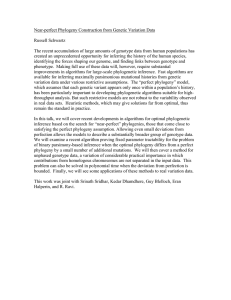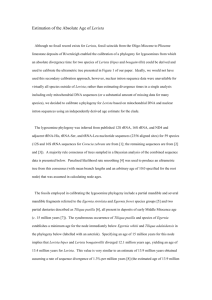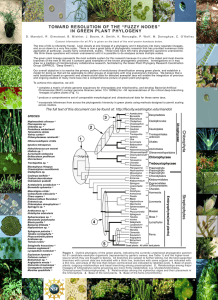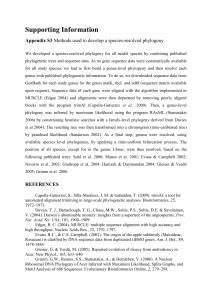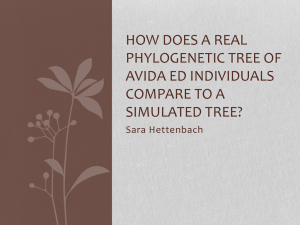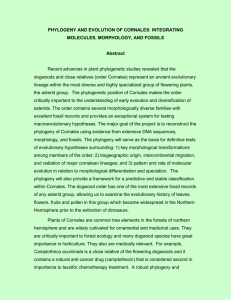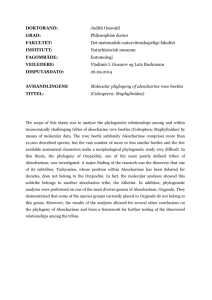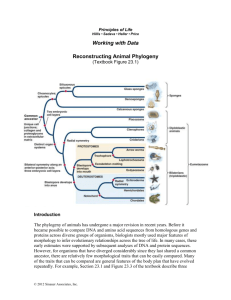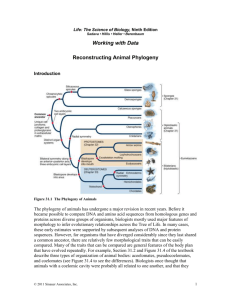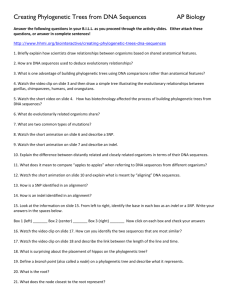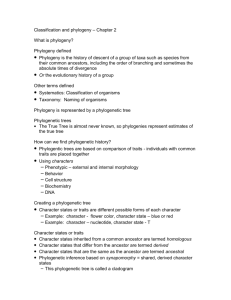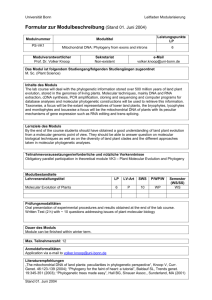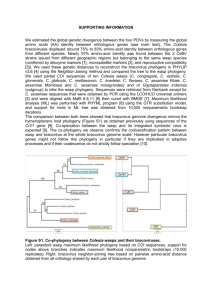111098_Phylogeny_from_DNA
advertisement
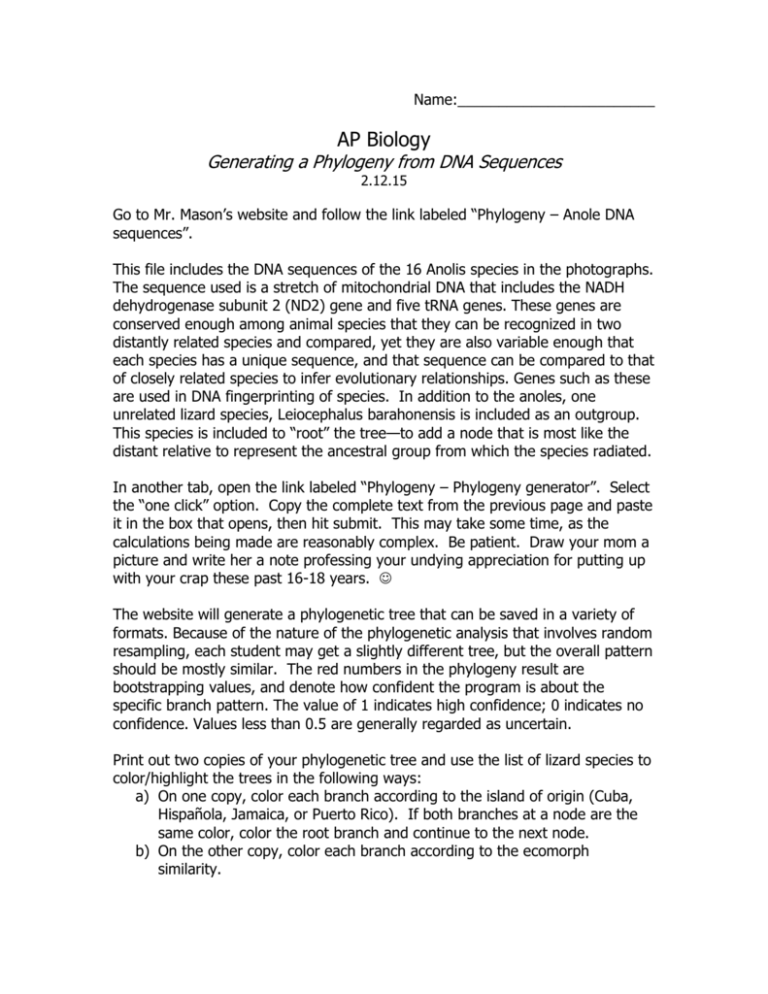
Name:________________________ AP Biology Generating a Phylogeny from DNA Sequences 2.12.15 Go to Mr. Mason’s website and follow the link labeled “Phylogeny – Anole DNA sequences”. This file includes the DNA sequences of the 16 Anolis species in the photographs. The sequence used is a stretch of mitochondrial DNA that includes the NADH dehydrogenase subunit 2 (ND2) gene and five tRNA genes. These genes are conserved enough among animal species that they can be recognized in two distantly related species and compared, yet they are also variable enough that each species has a unique sequence, and that sequence can be compared to that of closely related species to infer evolutionary relationships. Genes such as these are used in DNA fingerprinting of species. In addition to the anoles, one unrelated lizard species, Leiocephalus barahonensis is included as an outgroup. This species is included to “root” the tree—to add a node that is most like the distant relative to represent the ancestral group from which the species radiated. In another tab, open the link labeled “Phylogeny – Phylogeny generator”. Select the “one click” option. Copy the complete text from the previous page and paste it in the box that opens, then hit submit. This may take some time, as the calculations being made are reasonably complex. Be patient. Draw your mom a picture and write her a note professing your undying appreciation for putting up with your crap these past 16-18 years. The website will generate a phylogenetic tree that can be saved in a variety of formats. Because of the nature of the phylogenetic analysis that involves random resampling, each student may get a slightly different tree, but the overall pattern should be mostly similar. The red numbers in the phylogeny result are bootstrapping values, and denote how confident the program is about the specific branch pattern. The value of 1 indicates high confidence; 0 indicates no confidence. Values less than 0.5 are generally regarded as uncertain. Print out two copies of your phylogenetic tree and use the list of lizard species to color/highlight the trees in the following ways: a) On one copy, color each branch according to the island of origin (Cuba, Hispañola, Jamaica, or Puerto Rico). If both branches at a node are the same color, color the root branch and continue to the next node. b) On the other copy, color each branch according to the ecomorph similarity. Answer the following questions on a separate piece of paper: 1. What general patterns do you see in the tree? 2. Do species from the same ectomorph group together on a branch? 3. Do species from the same island group together on a branch? 4. Define adaptive radiation. 5. Would the diversification of anoles be an example of convergent or divergent evolution? Defend your answer. (A quick Google search might be in order here.) 6. Make me cookies.

